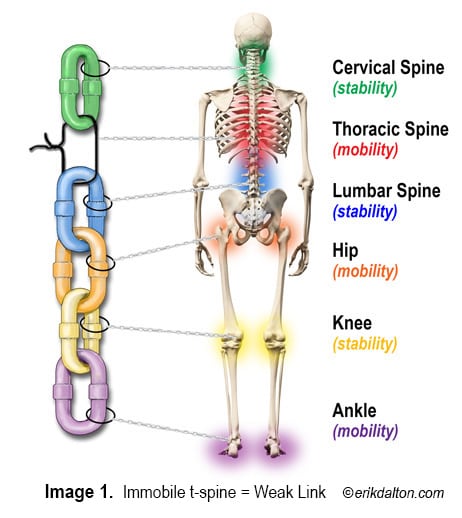
Have you ever had a problem, lets just say knee problem for our purpose here, and had treatment after treatment, felt a little better initially after the treatment but as soon as you starting performing some form of activity the pain was back?
If you have received multiple treatments to the same area and you still have the same amount of pain, don’t you think it is time to look a little further?
This is where the kinetic chain comes in. If your ankle is lacking mobility or is unstable your knee will suffer from that altered state. Just as if your hip is unstable or immobile your knee can again suffer from that dysfunction. As you can see from the picture above, the entire body depends on each body part to do its job and to work with surrounding structures to function and move properly. If one part of the body has been compromised, it is likely it will go up or down the kinetic chain causing further dysfunction!
Never underestimate the power of this concept and the interlink between various body parts.
What to take from this?
As a patient, being aware of how the kinetic chain works is crucial. It allows you to understand that the cause of your knee pain for example, can actually be originating somewhere else. It helps you understand that when you practitioner looks somewhere else to treat, he could actually be addressing the initial cause of the problem.
You are just as strong as your weakest link!
In this picture we see the weak link as stiffness in the Thoracic Spine (which can occur from long periods of sitting). This stiffness in the thoracic spine can allow for problems in the lumbar or cervical spine as well as the shoulders.
Your clinicians at SCI are trained in the Functional Movement Screen and the Selective Functional Movement Assessment for this various reason. We understand the area of your pain may not be the actual source of your pain. Know someone who may benefit from a different approach? Have them give us a call at 770-438-8990, we are ready to help!








